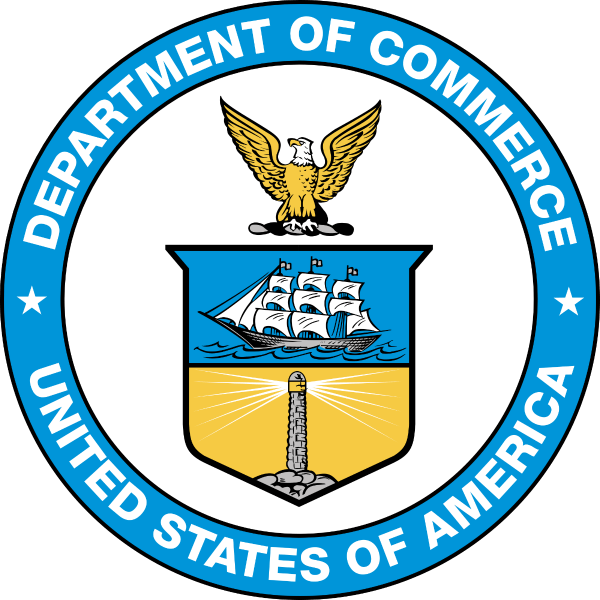What does the Federal Department of Commerce Do?
This is the second of a series of CSES articles examining the important work of US Government departments and agencies on the Eastern Shore.
The United States Department of Commerce is probably the least understood Cabinet department of the United States government. Created in 1903, it is a periodically-reconstituted grab bag of miscellaneous agencies, none of which actually engage in commerce or business. Instead, its main mission is to indirectly promote economic growth by gathering economic and demographic data for business and government decision-making and helping to set industrial standards.
The Commerce Department houses the US Census Bureau, which is currently gearing up for the giant task of counting every American in 2020 as mandated by the Constitution. Among the Department’s other well-known agencies are the Patent and Trademark Office (PTO), the International Trade Administration (ITA), the National Telecommunications and Information Administration (NTIA), and the National Institute of Standards and Technology (NIST).
The recent 35-day shutdown of the Federal government helped to raise awareness about the work of the Commerce Department, as many businesses complained about the lack of critical economic data it routinely produces. The Department releases dozens of reports each month on consumer spending, new home sales, trade balances, construction spending, business investment, factory orders and inventories, and many other topics. Delayed reports and long-term data distortions caused by the shutdown affect the ability to assess the health of the American economy.
In addition to its data collection work, about 60% of the Commerce Department’s budget is dedicated to the 12,000 employees of the National Oceanic and Atmosphere Administration (NOAA). Much of the about $5 billion NOAA spends each year is invested in analyzing the weather—the National Weather Service collects almost twice as much information as that contained in the holdings of the Library of Congress every day .
NOAA’s National Marine Fisheries Service (NMFS) is responsible for the management, conservation and protection of living marine resources within the United States' Exclusive Economic Zone (three to 200 miles offshore). NMFS assesses and predicts the status of fish stocks, develops and ensures compliance with fisheries regulations, restores and protects habitat, works to reduce wasteful fishing practices, and promotes sustainable fisheries. NMFS also manages the Chesapeake Bay Watershed Education and Training Program, which promotes locally relevant, experiential environmental learning in K–12 schools.
NOAA supports the Sea Grant College Program at the University of Maryland, a statewide program of research, education, and extension services that promote the wise use of coastal and marine resources. The research program focuses on critical issues facing the Chesapeake and coastal bays including water quality, nutrient dynamics, harmful algal blooms, and aquatic invasive species. It also supports environmental literacy and education by funding graduate and undergraduate research fellows and through ongoing collaborations with public high schools and middle schools. The program produces award-winning videos and the Chesapeake Quarterly magazine.
Since 1992, the NOAA Restoration Center has provided more than $750 million to implement more than 3,300 coastal habitat restoration projects in Maryland, including support for sustainable fisheries, helping to recover threatened and endangered species, and reversing damage from disasters like oil spills, ship groundings, and severe storms. They have worked to remove invasive species and dams, modify culverts, restore tidal wetlands and submerged aquatic vegetation, and rebuild the native oyster population.
NOAA supports the Cooperative Oxford Laboratory in Talbot County, which conducts scientific research on habitat and living resource management, marine diseases and invasive species, ecosystem modeling, and land use and coastal conditions. The laboratory has a 55’ research vessel used for regional research. One of their major projects is to help rebuild self-sustaining oyster populations throughout the Chesapeake Bay. In particular, the Choptank River was selected by NOAA as a Habitat Focus Area—a place where multiple NOAA offices and outside partners focus efforts to achieve healthier habitat.
NOAA is also working with the Chesapeake Bay Program to help communities become more resilient in the face of sea-level rise, land subsidence, and other changing conditions. The program provides information and forecasts to protect critical assets such as roads, bridges, buildings, emergency facilities, and private businesses, as well as natural infrastructure.
For such a little-known government Department, Commerce is very important to the present and future of the Eastern Shore.
Common Sense for the Eastern Shore








